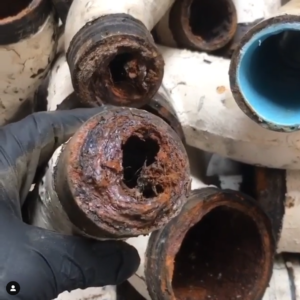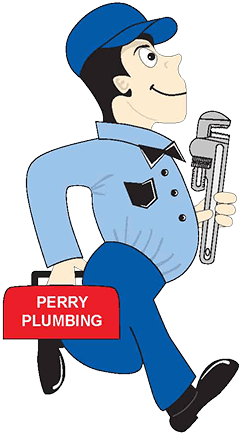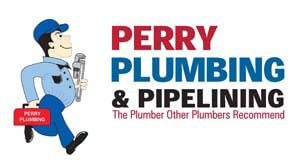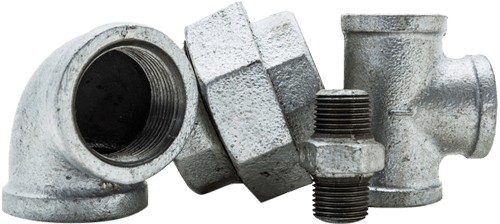Just a few weeks ago, we successfully finished another tough job. This one involved pipelining and sewer pipe replacement. Shortly after our crew arrived at the job site, we assessed the situation and helped our customer. Our crew found where the blockage was coming from and removed the blocking material, sealing the pipe with Nuflow technology. This saved our client thousands of dollars and got their pipes flowing again. Great job team!
What is Pipelining?
To best describe pipelining and sewer pipe replacement, imagine a smooth new PVC pipe installed within the existing damaged pipe. Afterward, the separation between the old & new pipes is filled with epoxy, a watertight seal. As a result, tests show an improvement of over 100% in original flow capacity despite the loss of inner diameter.
Sewer pipelining is a process used for repairing and replacing cracked, leaking, backed up and damaged sewer lines. It is also used to even-out or smooth rough bends and joints. As a result of it being a “no-dig” system, costly excavation and demolition are no longer necessary. So, pipelining is often less expensive than the traditional re-piping alternatives, such as excavations or open trench methods. Using a “no dig” trenchless process to avoid yard excavation, sidewalk destruction or digging up trees, sewer lining involves inserting new epoxy-saturated pipe tubing into existing pipes, inflating the tubing and curing it into place with hot air, steam or bluelight LED technology. This results in a new seal lining the walls of existing pipes, replacing broken piping with the potential to last for decades. It involves a four-step process and it is substantially putting a pipe within a pipe. Lining is cost efficient and less disruptive than replacing the entire pipe. Pipe lining also increases the life of a piping system, preserves the building structure and landscape, and causes little to no destruction to the property.
The most common words and phrases often used interchangeably with the sewer pipelining and sewer pipe replacement process include epoxy pipelining, sewer pipelining, cured-in-place pipelining (CIPP Lining), UV sewer lining (known as ultraviolet cured-in-place pipelining), lateral sewer line, sewer relining, internal pipelining, drain pipelining, internal pipelining, no dig sewer relining.
Steps to completing the pipelining process:

- To confirm the position of cracks and compromised pipes a sewer camera inspection is done.
- Debris and other blockages are removed by cleaning the existing pipes.
- The existing pipes are measured and the tube replacement is prepared. This tube is made of fiberglass or polyester.
- The tube is saturated with an epoxy resin and then inverted using an advanced inverter drum so that the epoxy is on the outside, allowing it to bind to the walls of the existing pipes.
- The inverted tube is inserted through the damaged pipes.
- Moisture is drawn out to cure the tube and create a new seal. This can be done through hot air or steam curing (takes from 4-12 hours to dry) or with blue light LED (5x faster dry time).
- The sewer flow is returned to the new pipes once the curing process is complete.
Why is pipelining better?
Trenchless pipelining and sewer pipe replacement repair is a less invasive solution for replacing pipes, as it doesn’t require excavation or tearing up yards, trees, driveways or sidewalks or the need to stop traffic during work. This method also eliminates the need to repave after the replacement is complete, making money savings significant. With this technology, underground utilities can be spared the risk of damage. This method targets root intrusion and helps reduce erosion of pipes and improves the flow of pipes.

How do I know if I need pipelining?
When you own or manage a building over 10 years old, the damage is probably already in progress. Undoubtedly, you’ll experience or see symptoms of pipe corrosion. Overall, symptoms can include the following:
- Water with discoloration
- Stains on sinks and/or tubs
- Odors or leaks.
- Poor water flow
- Continuous sewage backups
What type of pipes can be lined?
Both residential & commercial sewer laterals & drainage pipes from the property to the main line can have lining done to them. In addition, roof drainage pipes, collectors, & commercial floor drainage pipes can also have this done to them.
Why do pipes fail?
Two common reasons why pipe fail are corrosion and tree roots growing into the pipe.
Oxygen, metal, water and minerals deterioration cause pipe corrosion. This chemical reaction causes a buildup called scaling, which is a pile of corrosion where minerals like chloride and Sulphur turn into acids that eat away the pipe. Pouring chlorine into pipes causes corrosion over time. Tree roots also cause pipe failures. Their roots get into pipes looking for water, causing cracks in the pipes. Unquestionably, metal plumbing systems using copper or other galvanized systems show significant problems through time. Moreover, problems can occur in as little as 6 years. In addition, most copper & galvanized pipes show signs of corrosion within 10 years. So, the best long-term solution to pipe corrosion is to stop the water from coming into contact with your pipe’s walls.
Origins of trenchless pipelining
Pipe replacing used to involve excavation of yards, tearing up driveways and sidewalks, removing trees and ripping up gardens. Plumbing companies started using a process called sliplining, developing other pipe bursting methods and eventually started using pipelining.
- The Sliplining Process. Sliplining involves smaller carrier pipes that are inserted into the currently damaged piping system. These fully constructed pipes would be pulled through the cracked pipes and rehabilitate the existing system. Water and sewer lines would then be re-routed from the source to use these new carrier pipes and the cracked pipes would become obsolete.
- Pipebursting Process. Another method for trenchless pipe replacement that is still used in some scenarios is the pipe bursting process. This alternative to sewer pipe lining involves creating small entry and exit points above ground, pushing a new sewer pipe into an older damaged one and bursting the older pipe in the process.

Contact Our Trusted Team Today
Home and business owners can trust Perry Plumbing and Pipelining to deliver A+ service each and every time. Contact a plumber from our highly dedicated team today to schedule your appointment!


